
USCGC Westwind (WAGB-281) was a Wind-class icebreaker that served in the United States Coast Guard as USCGC Westwind (WAG-281), the Soviet Navy as the Severni Polius, and again in the U.S. Coast Guard as USCGC Westwind (WAGB-281).

USS Biscayne (AVP-11), later AGC-18, was a United States Navy Barnegat-class seaplane tender in commission as a seaplane tender from 1941 to 1943 and as an amphibious force flagship from 1943 to 1946. She saw service during World War II. Transferred to the United States Coast Guard after the war, she was in commission as the Coast Guard cutter USCGC Dexter (WAGC-385), later WAVP-385 and WHEC-385, from 1946 to 1952 and from 1958 to 1968.

USS Yakutat (AVP-32) was a United States Navy Barnegat-class small seaplane tender in commission from 1944 to 1946. Yakutat tended seaplanes in combat areas in the Pacific during the latter stages of World War II. After the war, she was in commission in the United States Coast Guard from 1948 to 1971 as the Coast Guard cutter USCGC Yakutat (WAVP-380), later WHEC-380, seeing service in the Vietnam War during her Coast Guard career. Transferred to South Vietnam in 1971, she was commissioned into the Republic of Vietnam Navy as the frigate RVNS Trần Nhật Duật (HQ-03). When South Vietnam collapsed in 1975 at the end of the Vietnam War, she fled to the Philippines, where the Philippine Navy took custody of her and cannibalized her for spare parts until discarding her in 1982.

USS Bering Strait (AVP-34) was a United States Navy Barnegat-class small seaplane tender in commission from 1944 to 1946. She tended seaplanes during World War II in the Pacific in combat areas and earned three battle stars by war's end.
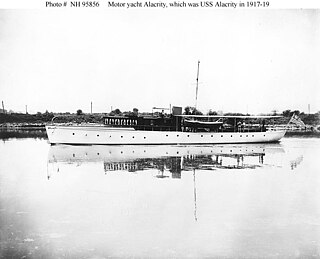
USS Alacrity (SP-206) was a steel cruising yacht that served in the US Navy as a section patrol craft. It was built by Pusey & Jones at Wilmington, Delaware for W. A. Bradford in 1910 then sold to John H. Blodgett of Boston.
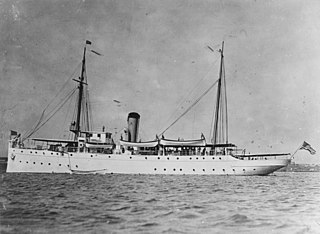
USCGC Tampa (ex-Miami) was a Miami-class cutter that initially served in the U.S. Revenue Cutter Service, followed by service in the U.S. Coast Guard and the U.S. Navy. Tampa was used extensively on the International Ice Patrol and also during the Gasparilla Carnival at Tampa, Florida and other regattas as a patrol vessel. It was sunk with the highest American naval combat casualty loss in World War I.

The third USS Calypso (AG-35) was launched 6 January 1932 for the United States Coast Guard as USCGC Calypso (WPC-104) by the Bath Iron Works in Bath, Maine. She was initially stationed at San Diego, California and transferred to Baltimore, Maryland in 1938. She was transferred from the Coast Guard to the U.S. Navy on 17 May 1941 and commissioned the same day, Chief Boatswain J. H. Keevers, USN in command.
The BRP Francisco Dagohoy (PF-10) was an Andrés Bonifacio-class frigate of the Philippine Navy that served from 1979 to 1985. She was one of six ex-United States Navy Barnegat-class small seaplane tenders and ex-United States Coast Guard Casco-class high endurance cutters received from the United States after the Vietnam War, two of which were cannibalized for spare parts without entering service. She and her other three sister ships were the largest Philippine Navy ships of their time.
The BRP Gregorio del Pilar (PF-8) was an Andrés Bonifacio-class frigate of the Philippine Navy in commission from 1977 to 1990. She was one of six ex-United States Navy Barnegat-class seaplane tenders/ex-United States Coast Guard Casco-class high endurance cutters received from the United States after the Vietnam War, two of which were acquired to supply spare parts for the other four. She and her three commissioned sister ships were the largest Philippine Navy combat ships of their time.

USS Castle Rock (AVP-35) was a United States Navy Barnegat-class small seaplane tender in commission from 1944 to 1946 which saw service in the late months of World War II. After the war, she was in commission in the United States Coast Guard as the Coast Guard cutter USCGC Castle Rock (WAVP-383), later WHEC-383, from 1948 to 1971, seeing service in the Vietnam War during her Coast Guard career. Transferred to South Vietnam in 1971, she served in the Republic of Vietnam Navy as the frigate RVNS Trần Bình Trọng (HQ-05) and fought in the Battle of the Paracel Islands in 1974. When South Vietnam collapsed at the end of the Vietnam War in 1975, Trần Bình Trọng fled to the Philippines, where she served in the Philippine Navy from 1979 to 1985 as the frigate RPSFrancisco Dagohoy (PF-10).
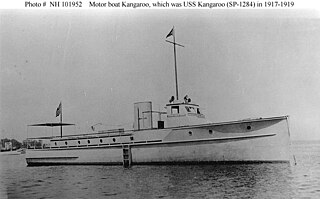
The first USS Kangaroo (SP-1284) was an armed motorboat that served in the United States Navy as a patrol vessel from 1917 to 1919.

USCGC Kangaroo, later USCGC AB-6, was United States Coast Guard patrol boat in commission from 1919 to 1932.
USS Howarda (SP-144) was an armed yacht that served in the United States Navy as a patrol vessel from 1917 to 1919.
USCGC Vidette was a United States Coast Guard Cutter commissioned in 1919.
USS J. A. Palmer (SP-319), later USS SP-319, was a United States Navy patrol vessel in commission between 1917 and 1919. The vessel was later USCGC Pequot in U.S. Coast Guard service.

USS SC-1, prior to July 1920 known as USS Submarine Chaser No. 1 or USS S.C. 1, was an SC-1-class submarine chaser built for the United States Navy during World War I.

USS SC-21, until July 1920 known as USS Submarine Chaser No. 21 or USS S.C. 21, was an SC-1-class submarine chaser built for the United States Navy during World War I.
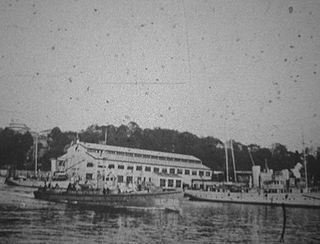
USS SC-22, during her service life known as USS Submarine Chaser No. 22 or USS S.C. 22, was an SC-1-class submarine chaser built for the United States Navy during World War I. She later served in the United States Coast Guard as USCGC Quigley.
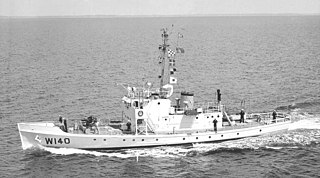
The Active-class patrol boat was one of the most useful and long-lasting classes of United States Coast Guard cutters. Of the 35 built in the 1920s, 16 were still in service during the 1960s. The last to be decommissioned from active service was the Morris in 1970; the last in actual service was the Cuyahoga, which sank after an accidental collision in 1978.













